The Softbox Gnome
I've had a couple of days with the makeshift softbox. What do I think of it? On the upside, it is great for the price and it diffuses my flash nicely. On the downside, it is bulky and not very portable. You can take it apart though if you want to. It would take about 10 to 20 minutes to put it back together I would guess.
Since I got it I have modified it a little. Not much to it, I just taped some aluminium foil to the sides and back in order to direct some of that spilled light back out the front. What I did and how it turned out after the jump. Plus, some more example shots.
Foil Lining
As you can see in the above shot, I added some aluminium foil to the inside of the softbox. I used just regular old Reynolds Wrap(tm) foil you can get at any grocery store. To hold it up, I used clear plastic packing tape. I chose that tape for a couple of reasons: 1) It was clear and wouldn't prevent the aluminium from reflecting the light, and 2) It was what I had in the house. The entire purpose here was to be cheap, so no need to go buy anything else.
One issue with the liner is that the fabric which makes up the softbox isn't very sticky. The tape doesn't want to stick to it, heck even industrial strength Velcro didn't want to stick to it which was my first thought to hold the foil up. Luckily, you can use the tubes for an anchor point as well.
Once you have the sides and back lined, then you have to fire your flash or aim your light into the softbox. The first night, if you will recall, I simiply fired the flash though the open "door". Well, I just lined that door with foil to reflect light. How did I get the light in there now? Through the zippered seam. The zipper has two tabs. One secures the top, the other secures the bottom, and you leave just enough open to stick you light or flash through.
Lighting the lined softbox
That ballhead is coming in really handy on the Gorillapod.
I was concerned that lighting the softbox off center like that would create a large hotspot to one side. However, as the next shot illustrates the light pattern isn't too bad.
Light pattern from lined softbox
The next thing that I did was to flag off the top of the softbox to control some of the vertical spill and pattern. I used a black, "project" board like the kind you would use for a science fair project. I got it at a hobby store awhile ago and have been using it as a background in my previous tabletop setup.
Project board flag/gobo/barndoor
The shot is a little soft, but I think you can see what type of board I'm talking about. It is a perfect fit over the top of the softbox.
"Flagged" Softbox
With all of that taken care of, it was time to do some tests. First up the Softbox Gnome.


Next, my son Connor. The shots are a little soft. I took them in a hurry so he wouldn't get too bored. The lighting was the most important thing here.


These were shot without fill which is why the shadows are so dark on the one side of his face. My next project is to get a fill reflector and support for portraits. The little pieces of cardboard that I use for tabletop work weren't tall enough.
It certainly isn't the best studio lighting in the world, but it is quite affordable and not very labor intensive. The catchlights that it leaves in the eyes is a bit odd too. However, I think this softbox is something that anyone could use to get started with studio lighting on a budget.
Friday, July 4, 2008
DIY Studio: $20 Softbox Part 2
Labels:
$20 Softbox,
DIY,
Project Talk
Subscribe to:
Post Comments (Atom)



8 comments:
It looks good! The aluminum foil is a good idea. Any idea how much efficiency it picked up with the foil added?
The look emulates window light, the softbox is about the same size as a window and is on the same plane. Time for a photo series.
Hi, Jim!
I would guess I might have picked up between a half to a full stop of light. I'm just guessing there though. I didn't really do any controlled before and after tests.
You're right about the window light look. I couldn't quite put my finger on what it looked like, but knew I liked it. It is actually about the size of the windows in our house.
Hi Craig,
I think your makeshift softbox is the best i've ever seen. And most importantly, it doesnt look as awkward as other makeshift photo equipment. I must say I might have to try it, but probably go to a fabric store and see how much shiny silver fabric/anything of that sort cost and stitch a lining. Hopefully it'll simulate as good as your aluminum lining or better, but still not hurt my pockets. Thanks for experimenting. I'll drop you a link if I like the results.
Kedon,
Thank you for the kind comments. I spent a couple of hours with it today photographing a globe. What can I say, I like maps. However the globe served some practical purposes too. The mountain ranges are textured, and being a globe it isn't flat. Thus, I thought it would serve as a good subject to play around with. I actually use it to practice with my flash quite often. I like the results so far. I think my next subjects will be some flower arrangements from the store. The softbox would make a good backlight for transluscent items.
Let me know how your fabric lining works out. I don't know one end of a sewing machine from another. The foil was the only thing I could really manage on my own. ;) I imagine that you could probably use some grommets or snaps to have a better attachment than I do with the tape. I'm looking forward to seeing how it turns out for you.
It's better than my lighting situation though, which consists of the onboard flash on my 350D and whatever ambient light is available.
Chris, I thought you had a hotshoe flash.
I used my SB600 in the softbox because it is what I had and I could contol it's power via my camera. However, you could hang a couple of workshop fluorescent fixtures in it as well. It would probably diffuse those halogen work lamps that a lot of people use as starter lights. Just don't put them too close to the fabric.
If i'm not mistaken, I believe regular aluminum foil to have a reflectivity rating of around 85%. Mylar is something around 98%
so try using termal blanket or these foils they use to wrap the flowers, they're made of mylar
cheers :)
I was wondering how well mylar would work. The aluminum foil has come off a couple of times already and is a pain to keep putting back up. I'll try to find some silver mylar next time I'm out shopping.
Post a Comment